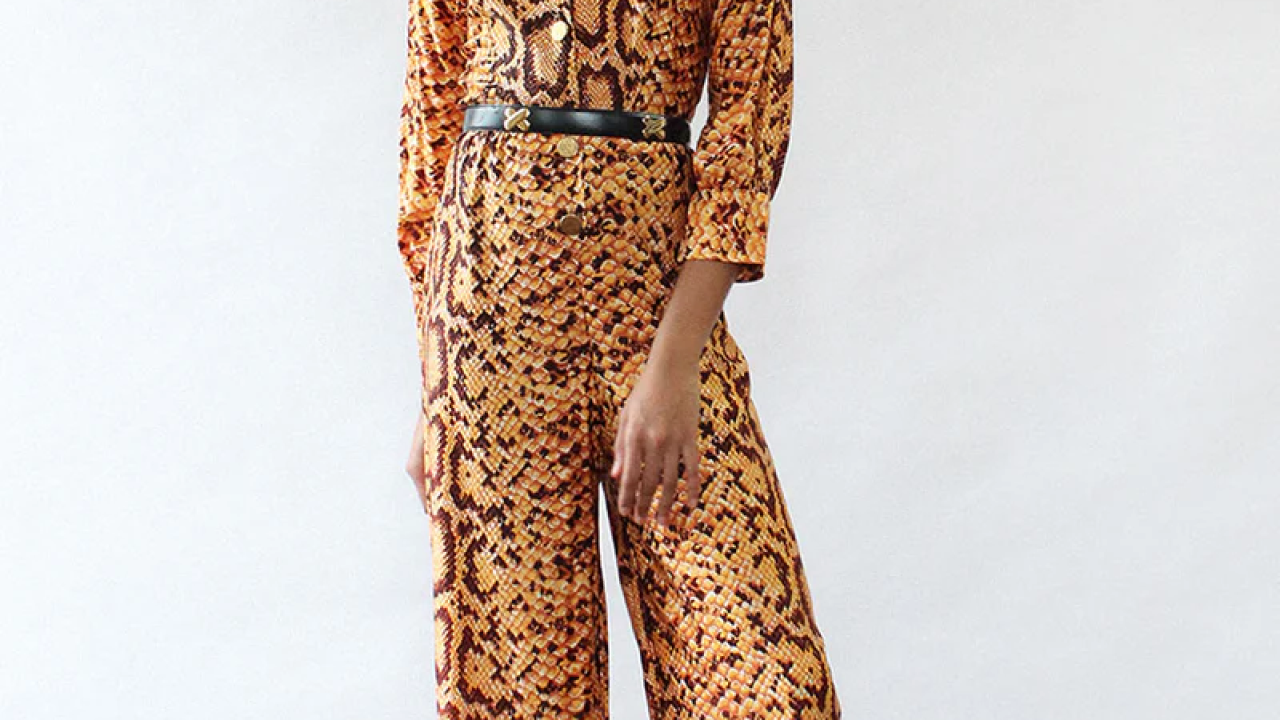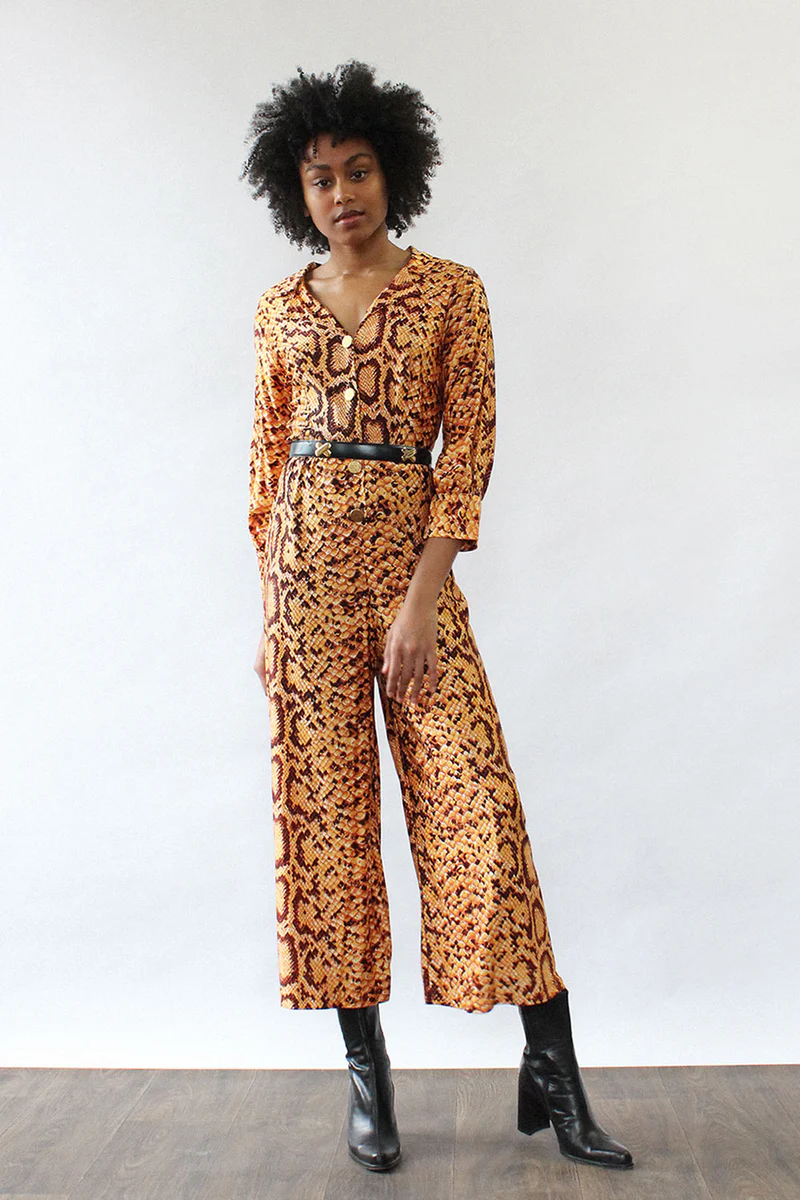AllVintageStyles
Vintage fashion encyclopedia
Jumpsuit


A 1970s jumpsuit is a one-piece garment combining pants and top that became iconic of the decade's disco culture and women's liberation movement, representing practical fashion that offered both style and freedom of movement for active lifestyles.
Quick Facts
- Era: 1970s (peak popularity 1973-1979)
- Origin: United States (disco culture and women's liberation fashion)
- Garment Type: One-piece pant and top combination
- Key Identifiers: Wide legs, fitted bodice, zip or wrap closure, often with belt
- Typical Resale Price: $50-$250 (authentic vintage pieces)
- Best For: Disco enthusiasts, 1970s fashion collectors, and statement vintage styling
History & Evolution
The jumpsuit gained mainstream popularity in the early 1970s as part of the decade's embrace of practical yet glamorous fashion that suited women's increasingly active lifestyles. Originally derived from utilitarian workwear and military uniforms, the garment was transformed into sophisticated fashion that could transition from day to evening wear with appropriate styling and accessories.
During the mid-1970s disco boom, jumpsuits became essential nightclub attire featuring wide legs, fitted bodices, and luxurious fabrics that complemented the era's dance-focused culture. The one-piece construction offered freedom of movement on dance floors while maintaining elegant silhouettes that emphasized both comfort and glamour, perfectly embodying the decade's hedonistic lifestyle.
The jumpsuit represented women's liberation from traditional dress codes, offering practical alternatives to dresses and skirts while maintaining feminine sophistication. Quality vintage jumpsuits featured superior construction with proper fit through the torso, flattering leg proportions, and attention to details like belt coordination and closure placement. Today, authentic 1970s jumpsuits are prized for their superior tailoring and representation of the decade's fashion innovation.
Authentication Tips
Authentic 1970s Features:
- Wide-leg construction with proper proportions for disco-era dancing
- Quality fabrics including polyester knits, crepe, or luxurious blends
- Period-appropriate closures including long zippers, wrap styling, or button fronts
- Fitted bodice construction with proper tailoring through waist and hips
- Vintage sizing that tends to run smaller with longer torso measurements
Common Reproductions/Modern Pieces:
- Contemporary stretch fabrics that add body-consciousness foreign to 1970s styling
- Modern fitted cuts through legs that contradict authentic wide-leg proportions
- Poor quality construction lacking proper tailoring and professional finishing
- Contemporary closure systems or hardware not available in 1970s production
- Modern proportions that don't accommodate the authentic 1970s silhouette
Styling & Use Cases
- Best for disco enthusiasts: Pair with platform shoes, statement jewelry, and bold makeup for authentic 1970s dance floor glamour
- Ideal for statement vintage styling: Style with wide belts, chunky accessories, and confident attitude for dramatic retro looks
- Perfect for special occasions: Combine with elegant accessories for sophisticated vintage-inspired evening wear
Modern styling tips:
- Belt at natural waist to emphasize the jumpsuit's designed silhouette and maintain authentic 1970s proportions
- Pair with contemporary heels or boots for updated styling while honoring the garment's disco heritage
- Layer with blazers or cardigans for versatile looks that can transition from casual to professional
FAQ
Q: How can I tell if a jumpsuit is authentic 1970s vintage?
A: Look for wide-leg construction with proper disco-era proportions, quality fabric construction, period-appropriate closures, fitted bodice tailoring, and vintage sizing. Authentic pieces show superior construction typical of 1970s fashion manufacturing.
Q: What's the typical price range for vintage 1970s jumpsuits?
A: Authentic vintage jumpsuits range from $50-$250 depending on designer, fabric quality, and condition. Pieces with exceptional construction or designer labels command higher prices among 1970s fashion collectors.
Q: How should I care for a vintage 1970s jumpsuit?
A: Check fabric content and care accordingly - many 1970s synthetics can be gently machine washed, while delicate fabrics should be dry cleaned. Store hanging to maintain the jumpsuit's tailored silhouette and prevent wrinkles.
Q: What makes 1970s jumpsuits valuable to collectors?
A: Their representation of 1970s disco culture and women's liberation movement, superior tailoring and construction quality, association with dance culture and nightlife fashion, and embodiment of the decade's embrace of practical yet glamorous fashion that challenged traditional feminine dress codes.
📷: OMNIA
